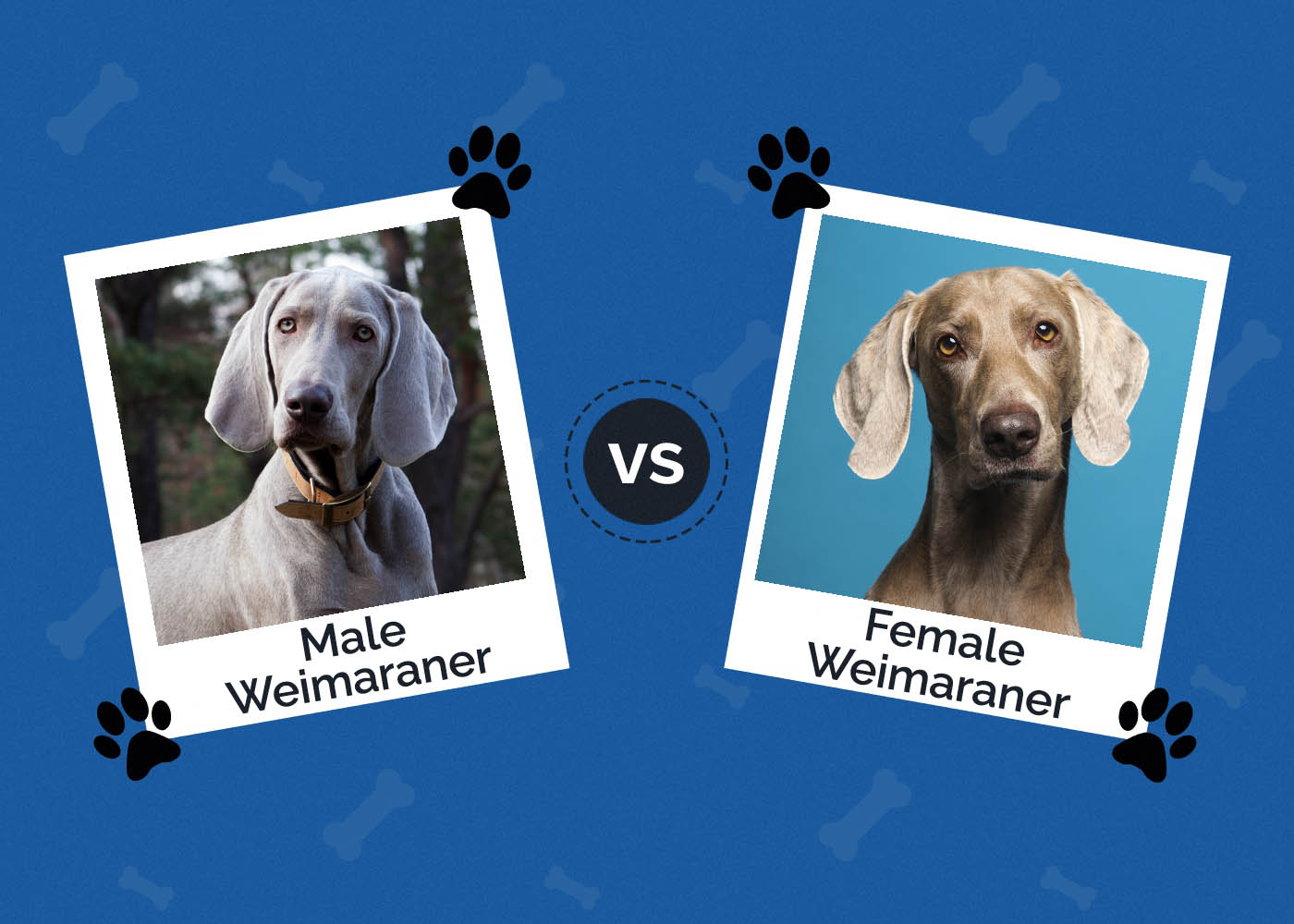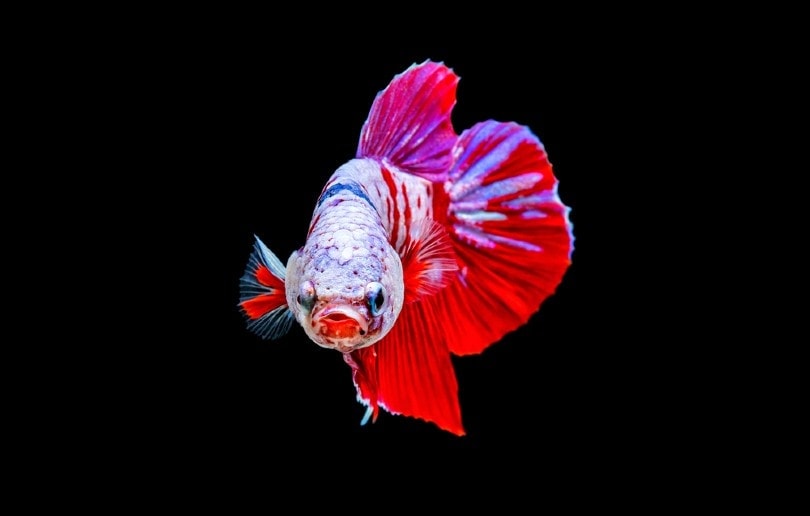12 Dog Breeds That Are Closest to Wolves Genetically: Pictures, Facts & History
By Kit Copson
Updated on
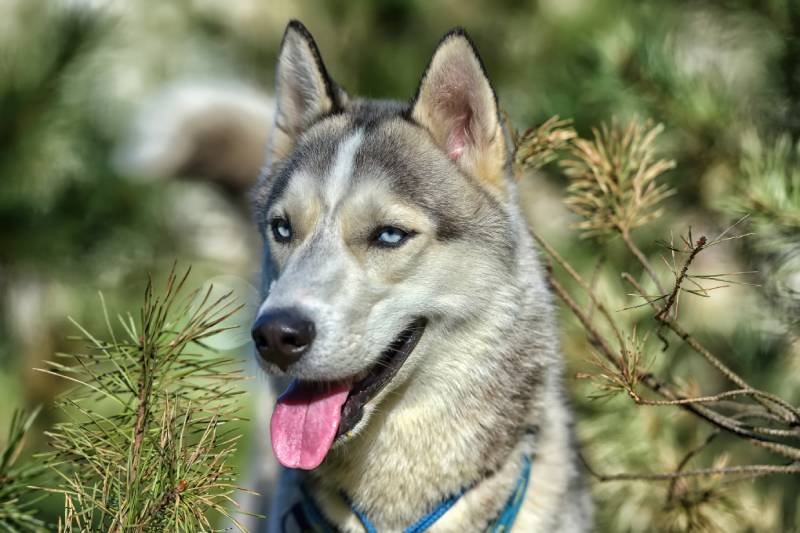
There are several dog breeds that come in all colors and sizes and have a unique history. However, many people are unaware that all dogs are relatives of wolves and share over 99% of their DNA!
There are still modern dog breeds that are genetically closest to wolves, even though dogs were first domesticated more than 15,000 years ago. In this article, we’ll discuss a few breeds genetically related to their predecessors. While some are understandable and easy to guess, some may come as quite a surprise.
How Are Wolf Breeds Classified?
All dogs are descended from an extinct and prehistoric wolf species, but some dog breeds, like the Chow Chow or Shih Tzu, don’t look the part. Dogs were domesticated from wolves from two populations, one in Asia and one in Europe, more than 15,000 years ago, but their domestication’s exact date and location remain unknown.
The physical resemblances some breeds have to wolves make it easy to identify their ancestry, but it is far less clear with other dogs. Although the wolf-like characteristics in certain breeds are long gone physically, they are nevertheless related genetically.
Dogs are smaller, stockier, have shorter muzzles, and fewer teeth than wolves. They have evolved and have become man’s best friend, while wolves have remained wild and have avoided humans.
The 12 Dog Breeds That Are Closest to Wolves Genetically
1. Siberian Husky
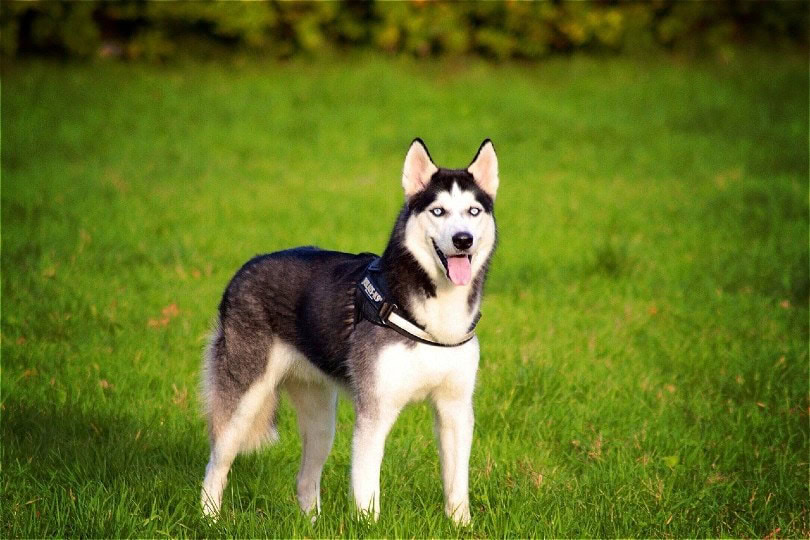
| Origin: | Siberia |
| Height: | 20-23.5 inches |
| Weight: | 25–60 pounds |
Siberian Huskies are one of the modern breeds with a higher proportion of ancient genetic coding than other dogs. Apart from genetics, they are also similar to wolves in appearance. They share similar features and head shapes and have thick double coats and pointed upright ears. Huskies are even frequently utilized to portray wolves in films and television because of how similar they appear. Furthermore, wolves and Huskies are both pack animals with high prey drives. Another similar trait you may notice with a husky and a wolf is that they both like to howl.
The Chukchi people of eastern Siberia’s Chukchi Peninsula are said to have developed the Siberian Husky. They were initially produced and utilized for sled racing after being transported to Nome, Alaska, in 1908 to serve as working sled dogs. They endured temperatures below zero and were ideally suited for the location in which they were raised.
2. Alaskan Malamute
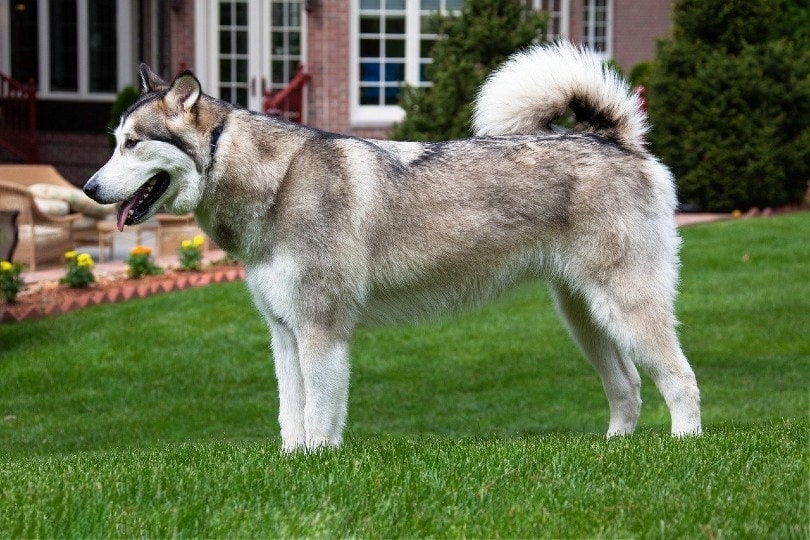
| Origin: | Siberia |
| Height: | 23–15 inches |
| Weight: | 75–85 pounds |
The Alaskan Malamute is very closely related to wolves, and one can easily be mistaken for a wolf due to their very similar physical appearance. Like Siberian Huskies and wolves, they are pack animals with a high drive. The three key areas where they are comparable to wolves are appearance, physical ability, and pack mentality. However, the Alaskan Malamute doesn’t possess the hostility of its ancestor. These dogs are playful and friendly and make wonderful companion dogs.
Of the Arctic sled dog breeds, the Alaskan Malamute is one of the oldest. They are thought to be descended from the domesticated wolf dogs that traveled with Paleolithic hunters as they migrated into North America some 4,000 years ago. The Malemutes are an indigenous tribe that gave rise to the breed’s name. Siberian Huskies and other Arctic dog breeds are faster and can pull lighter weights on sleds. Malamutes are freighters, while Huskies are racers.
3. Shiba Inu
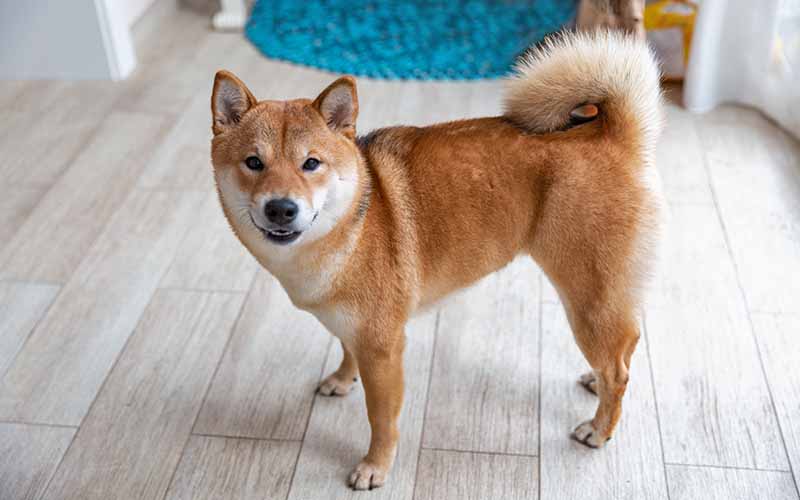
| Origin: | Japan |
| Height: | 5–16.5 inches |
| Weight: | 17–23 pounds |
Another dog closely related to the wolf is the Japanese breed known as the Shiba Inu. Although their appearances differ more than the Husky and the Malamute, Shiba Inus may have up to 5.5% of their DNA in common with Japanese wolves. The Shiba Inu is a small but muscular dog originally used as a hunter. They are strong, powerful dogs with confident demeanors.
The Shiba is an ancient breed that dates back to 300 B.C. The Japanese word “Shiba” means “brushwood,” and “Inu” means “dog.” The breed’s name is a reference to its history as a hunter in the arduous highlands of Japan. Shibas were all but extinct by the end of World War II in Japan, but they managed to endure the hardships of the war and are now the most popular pets there. For the past 50 years, their appeal has been increasing in the US.
4. Samoyed
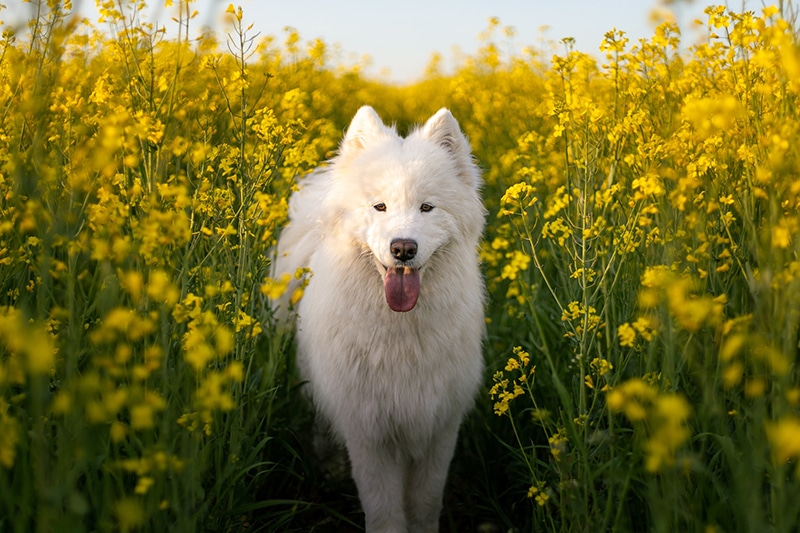
| Origin: | Siberia |
| Height: | 19–23.5 inches |
| Weight: | 35–56 pounds |
Samoyeds are closely related to wolves. They are a member of the Spitz family of dogs, which resemble wolves the most. Samoyeds have a double coat, a pointed muzzle, and ears that are triangle-shaped and upright, just like their wild relatives. Samoyeds are breathtakingly beautiful but also very practical.
They are strong, nimble, tireless, and cold-resistant. Even their most endearing trait, a permanent smile, serves a purpose. The raised corners of the mouth stop them from drooling, which stops icicles from growing on their faces.
The Samoyedic people were semi-nomadic people from Asia who came to Siberia a thousand years ago. In the coldest inhabited regions in the world, they developed dogs for hard labor. They initially hunted reindeer with their dogs, but reindeer herding replaced reindeer hunting in the Samoyed culture.
The fearless white hunting dogs found a new calling as stock dogs, moving and guarding the herds. Samoyeds were also used to lay on their owners during the chilly Siberian and Russian nights to keep them warm. The Samoyed was first introduced to British dog enthusiasts by Arctic explorers who returned to England in the late 18th century.
5. Saluki
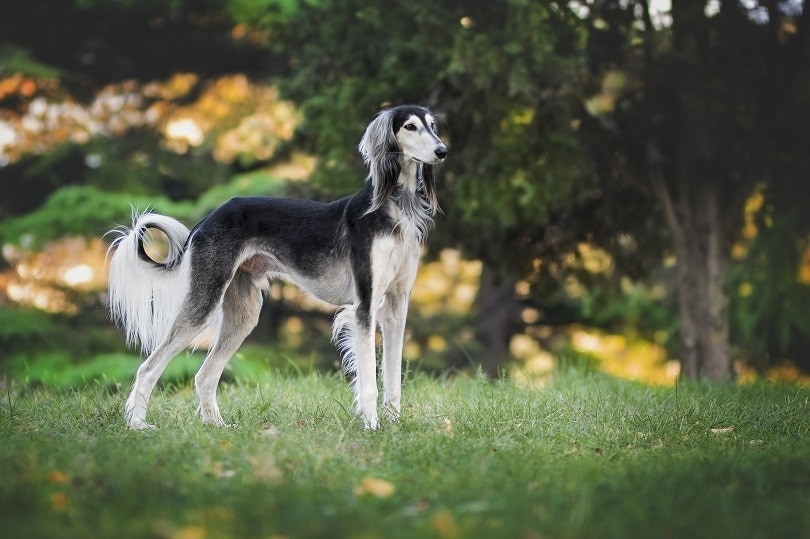
| Origin: | Middle East |
| Height: | 23–28 inches |
| Weight: | 40–65 pounds |
The Saluki is a large dog that does not resemble a wolf, but genetically, they are among the breeds most similar to wolves. Salukis are slim and tall, like a good chase, and are incredible sprinters. They make kind, trustworthy, independent, and devoted pets. Salukis are incredibly adaptable and can thrive in any environment.
The Saluki is among the oldest breeds and may have existed as early as 7000 B.C. Similar to other sighthound breeds, Salukis were favored by royalty throughout history. The Saluki was so revered that their body was frequently mummified, just like the Pharaohs’.
As a result, countless specimens’ remains have been discovered in the Upper Nile region’s ancient graves. The first Salukis, also called Persian Greyhounds, were introduced to England in 1840 and used to hunt hares.
6. Shih Tzu
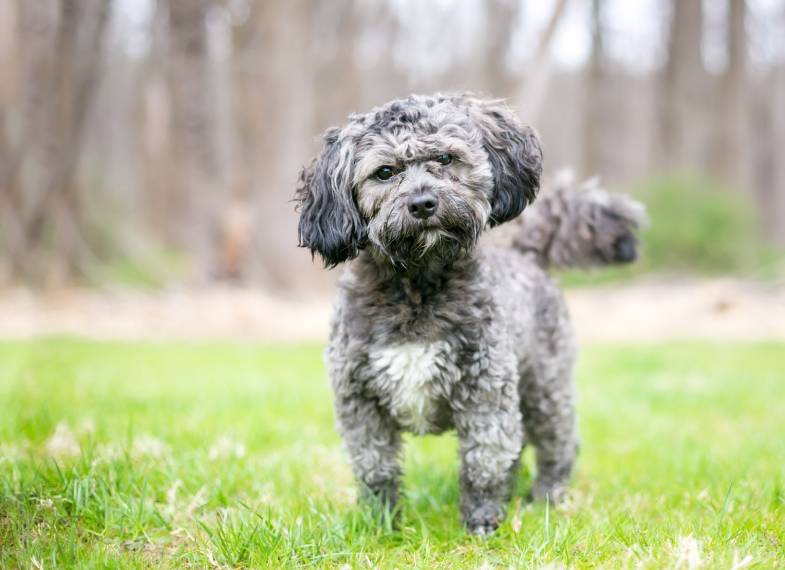
| Origin: | Tibet |
| Height: | 9–10.5 inches |
| Weight: | 9–16 pounds |
The Shih Tzu may be one of the more surprising breeds closest to wolves genetically. However, they are genetically similar to wolves. In fact, Shih Tzus are genetically more similar to wolves than most other breeds. The Shih Tzu is one of the oldest dog breeds, with roots dating back to ancient China.
Shih Tzus and wolves have several physical and behavioral similarities, including short snouts, round eyes, and thick coats. Like wolves are to their pack members, they are also quite gregarious and devoted to their owners.
The Shih Tzu, which means “lion dog,” was created by imperial breeders in the Chinese emperor’s court from Tibetan breeding stock. The Lhasa Apso and the Pekingese, two even more ancient Sino-Tibetan breeds, were likely crossed to create the breed. The Shih Tzu was lavished with care and attention by emperors and their families for hundreds of years while living the life of a royal lap dog. Until the 1930s, the breed was kept secret behind palace walls and unknown to the general public.
7. Akita
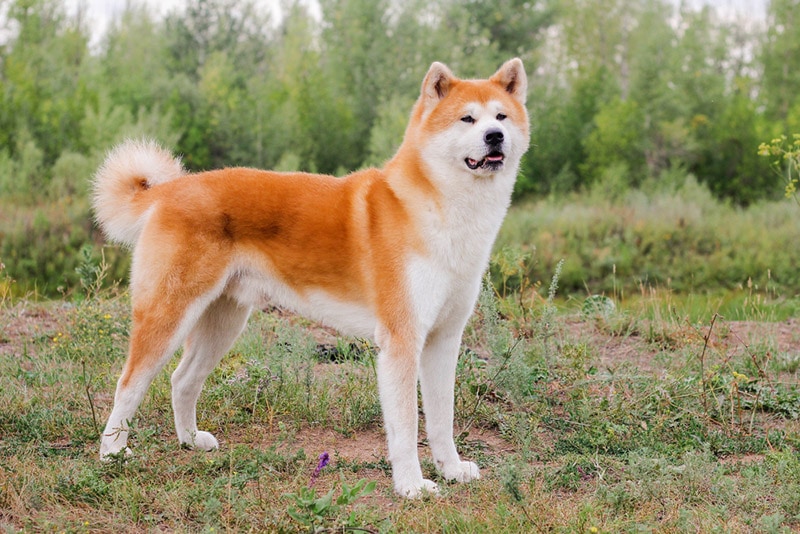
| Origin: | Japan |
| Height: | 24–28 inches |
| Weight: | 70–130 pounds |
According to researchers, one of the breeds most genetically similar to ancient wolves is the Japanese Akita Inu. Despite having a similar ability to survive in similar climates and being of comparable size, they are physically distinct. Both animals can be aggressive at times. The Akita was raised as a guard dog, while wolves typically display hostility in the wild, especially when defending their position as the pack leader or territory.
The elegant and regal Akita has numerous skills. They are fantastic family dogs, superb hunters, and frequently trained as police dogs. The Akitas hunted in groups on large prey, including wild boar, deer, and the Yezo bear.
Throughout the long history of the Akita, the breed has been on the verge of extinction, but in 1927, a Japanese national breed club was established to protect the Akita. The first Akita, a gift from Japan that Helen Keller brought to the United States, is credited to her. After World War II, Akitas gained popularity in America.
8. Afghan Hound
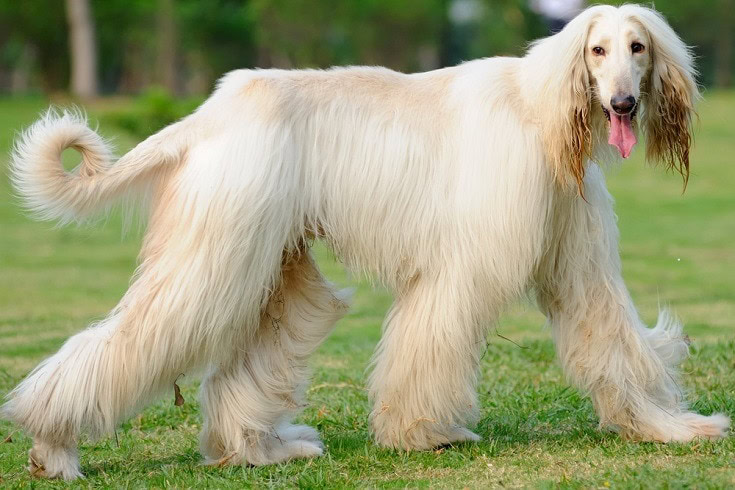
| Origin: | Afghanistan |
| Height: | 25–27 inches |
| Weight: | 50–60 pounds |
Another hound with close genetic ties to wolves is the striking Afghan Hound, a relative of the Saluki. Although Afghan Hounds do not look anything like wolves and do not behave like them, the breed has a very close genetic relationship to wolves. The Afghan Hound is a strong-willed, independent dog that occasionally displays clownish behavior while being aloof and independent.
The Afghan Hound is an old breed that is said to be one of the oldest purebred breeds. Afghan Hounds are part of the group of dogs known as sighthounds, which use their keen eyesight and quick reflexes to locate and hunt their prey.
Afghans have long served as prestige symbols for aristocrats, tribal chiefs, and royalty in Asia’s mountainous regions. The breed was brought to Europe by English officers in the 18th century and became the dog of choice among the British gentry around the turn of the 20th century.
9. Pekingese

| Origin: | China |
| Height: | 6–9 inches |
| Weight: | up to 14 pounds |
Like the Shih Tzu, the Pekingese is another lap dog that doesn’t resemble a wolf yet is genetically the closest canine breed to wolves. Although their outward characteristics may suggest otherwise, their genetic makeup hasn’t changed much from that of their ancestors.
It is difficult to determine the Pekingese’s original origins because they are such an ancient breed. According to a Chinese myth, the Buddha shrank a lion to create the Pekingese breed. While we know this isn’t true, the Pekingese was sized down from a larger breed of dog when Chinese nobles were breeding short-snouted lap dogs.
Members of the imperial family kept them as palace dogs. English forces that looted the Imperial Palace in Peking (Beijing) in 1860 then brought the Pekingese to the West. The emperor’s aunt committed suicide, but five of her dogs were found by a British captain. The dogs were sent to England as a gift for the queen and quickly grew in popularity. The Pekingese first appeared in America in the late 1890s.
10. Chow Chow
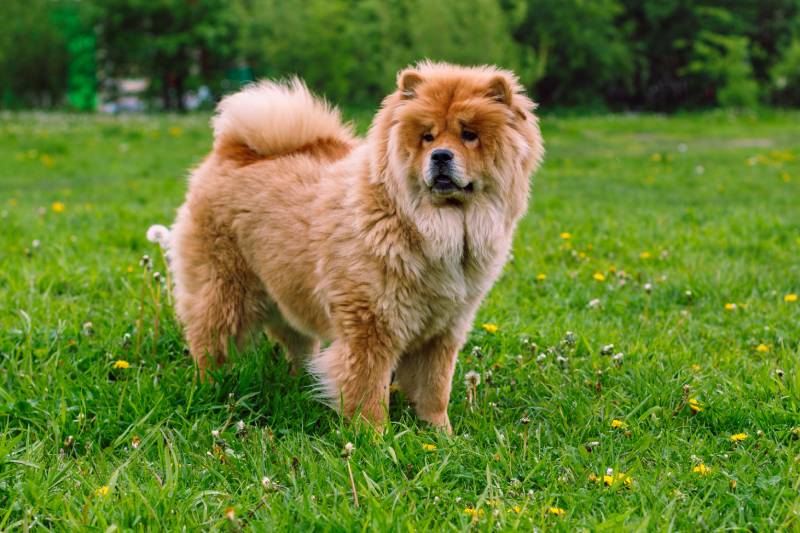
| Origin: | China |
| Height: | 17–20 inches |
| Weight: | 45–70 pounds |
The Chow Chow shares their ancestral lineage with several indigenous Chinese and East Asian breeds. The temperament of Chow Chows is likewise very similar to that of wolves. They are aloof, forceful, and can be very protective of their family.
The Chow Chow is among the world’s most unique and possibly oldest breeds. The dog’s origins go back thousands of years, while it is frequently debated whether they originated from Spitz-type dogs or vice versa.
They have a history of serving as hunters, sled pullers, livestock guardians, and, sadly, meals. The Chow Chow arrived in the Western world in the late 1800s and quickly gained popularity.
11. Tibetan Terrier

| Origin: | Tibet |
| Height: | 14–17 inches |
| Weight: | 18-30 pounds |
The Tibetan Terrier, bred for life in the snowy highlands, is a small dog with a close genetic relation to wolves. They are ancient companions and watchdogs that have long been connected to Buddhist monasteries. Their stunning double coat is a breed trademark and comparable to their wolf ancestors.
Tibetan Terriers are Tibetan, but they are not real Terriers. They are an ancient breed formed in the beautiful solitude of the Lost Valley. Although Tibetan Terriers are most famous for being companions and watchdogs, they have also served as herders and flock guardians throughout their lengthy history.
12. Basenji
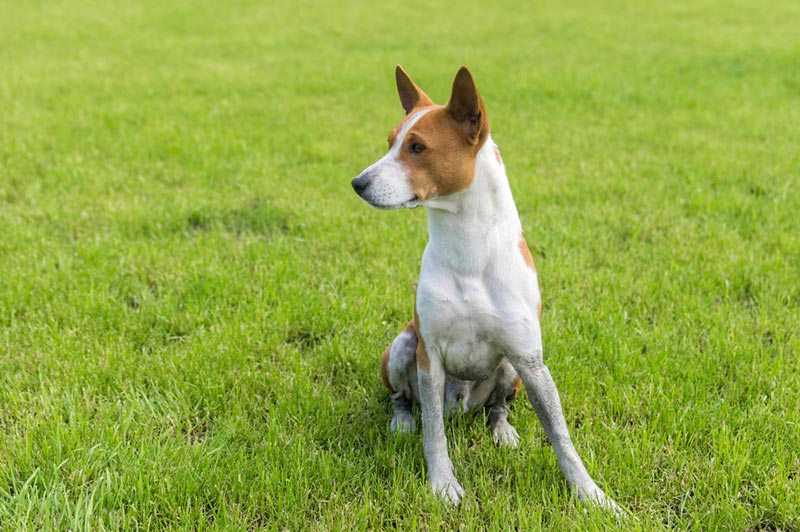
| Origin: | Africa |
| Height: | 16–17 inches |
| Weight: | 22–24 pounds |
Basenjis possess a large amount of “wolf-like” DNA, making them one of the genetically closest breeds to wolves. Like their wolf relatives, they are excellent hunters, but instead of howling, they possess a unique bark resembling yodeling sounds. The graceful Basenji measures 16–17 inches at the shoulder and makes excellent companions for active families.
The Basenji dates back centuries and resembles some of the earliest domesticated dogs. These early Basenji ancestors spent many years living as semi-feral dogs in isolated parts of Africa. Due to the absence of crossbreeding, the breed remained primarily unchanged. Basenjis were trained as hunting dogs by locals in what is now the Democratic Republic of the Congo. Basenjis didn’t arrive in the United States until the early 1900s.
Conclusion
Although all dogs descended from wolves, some breeds have a closer relationship with wolves than others. While some clearly resemble their wolf relatives, some don’t but are still closely related genetically. Besides the genetic and aesthetic connection to wolves, our companions today are not like wolves at all, as they can form strong emotional relationships with people, unlike their wild ancestors. As dog lovers, we are grateful that these beautiful breeds have evolved into the loving companions they are today.
Related Read:
Featured Image Credit: Anna Krivitskaya, Shutterstock

